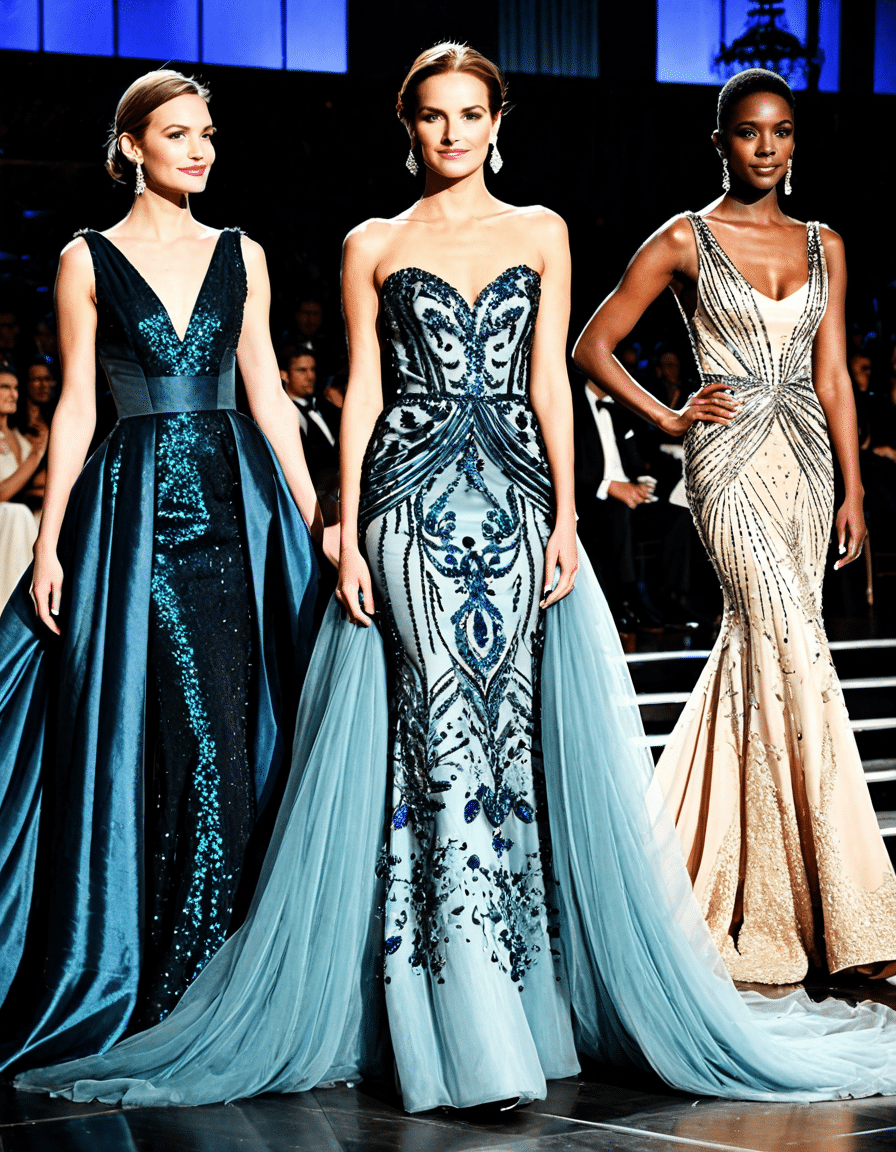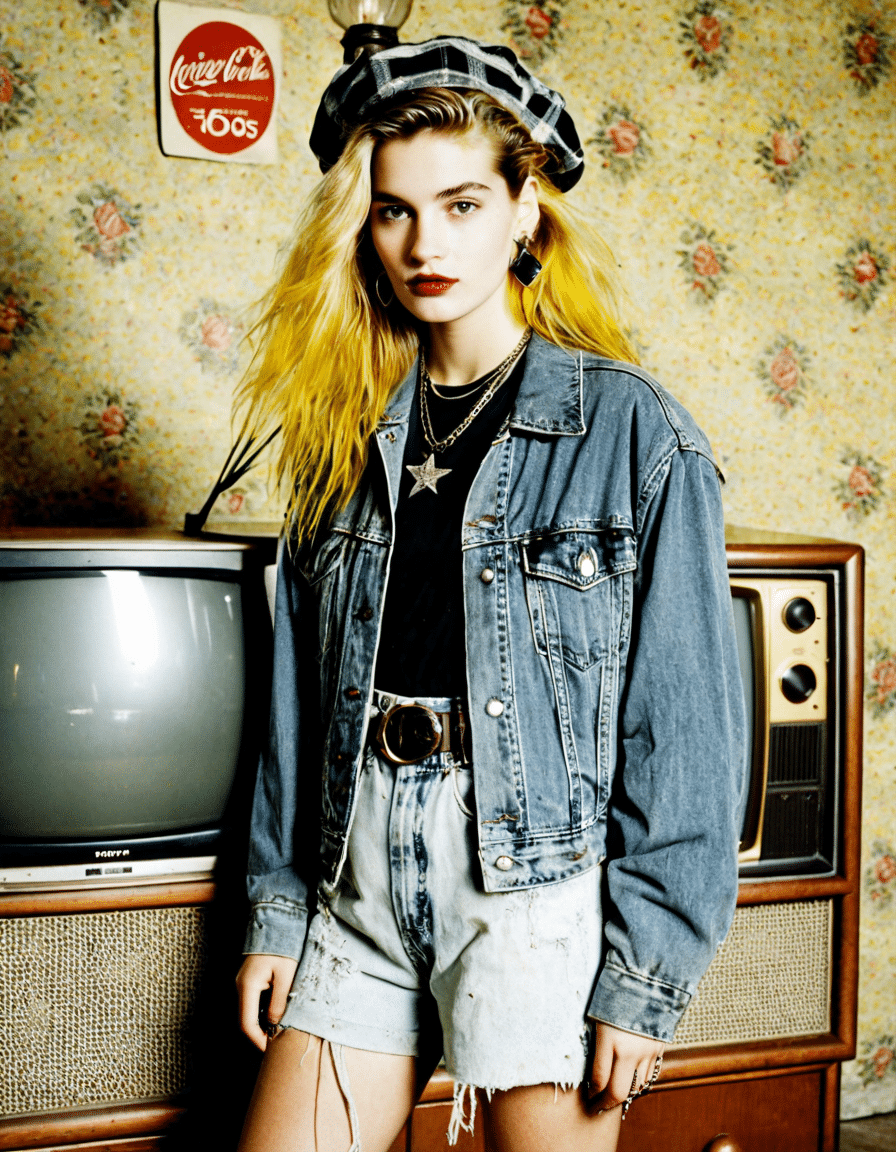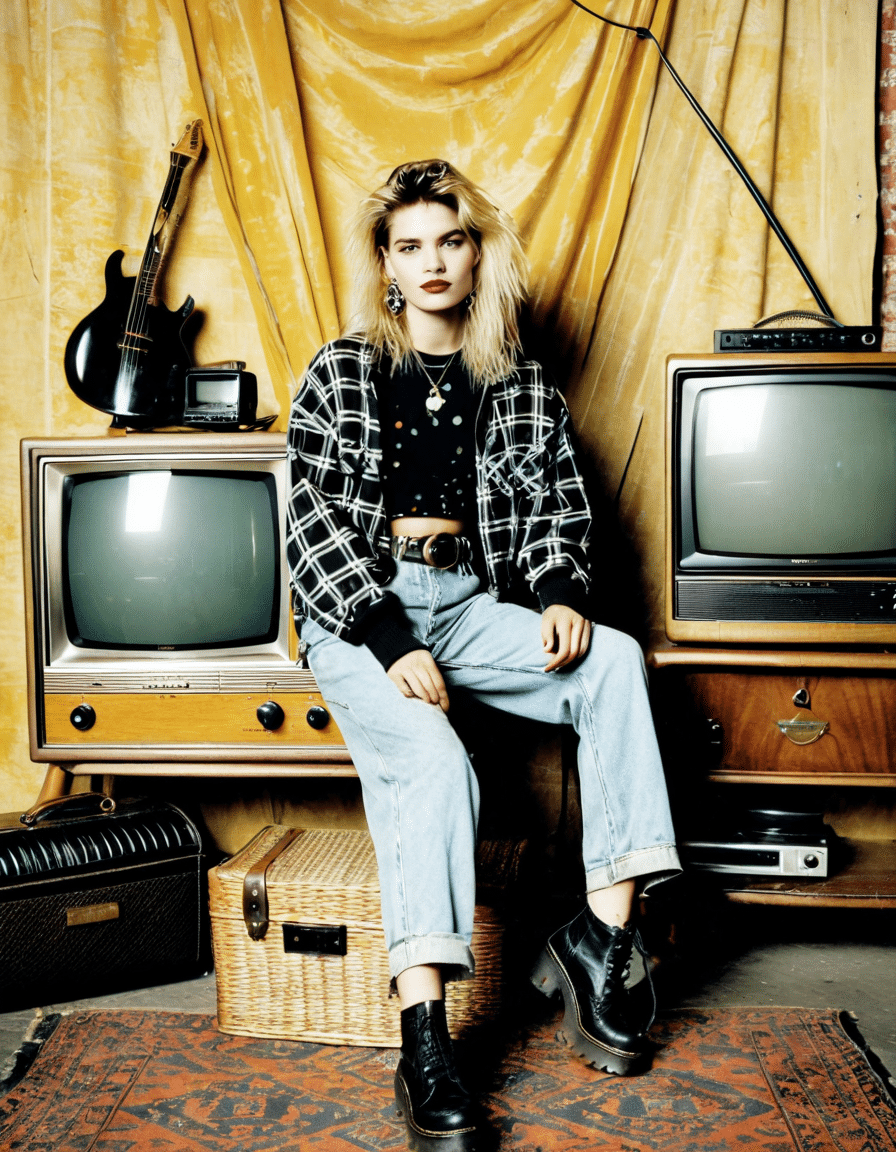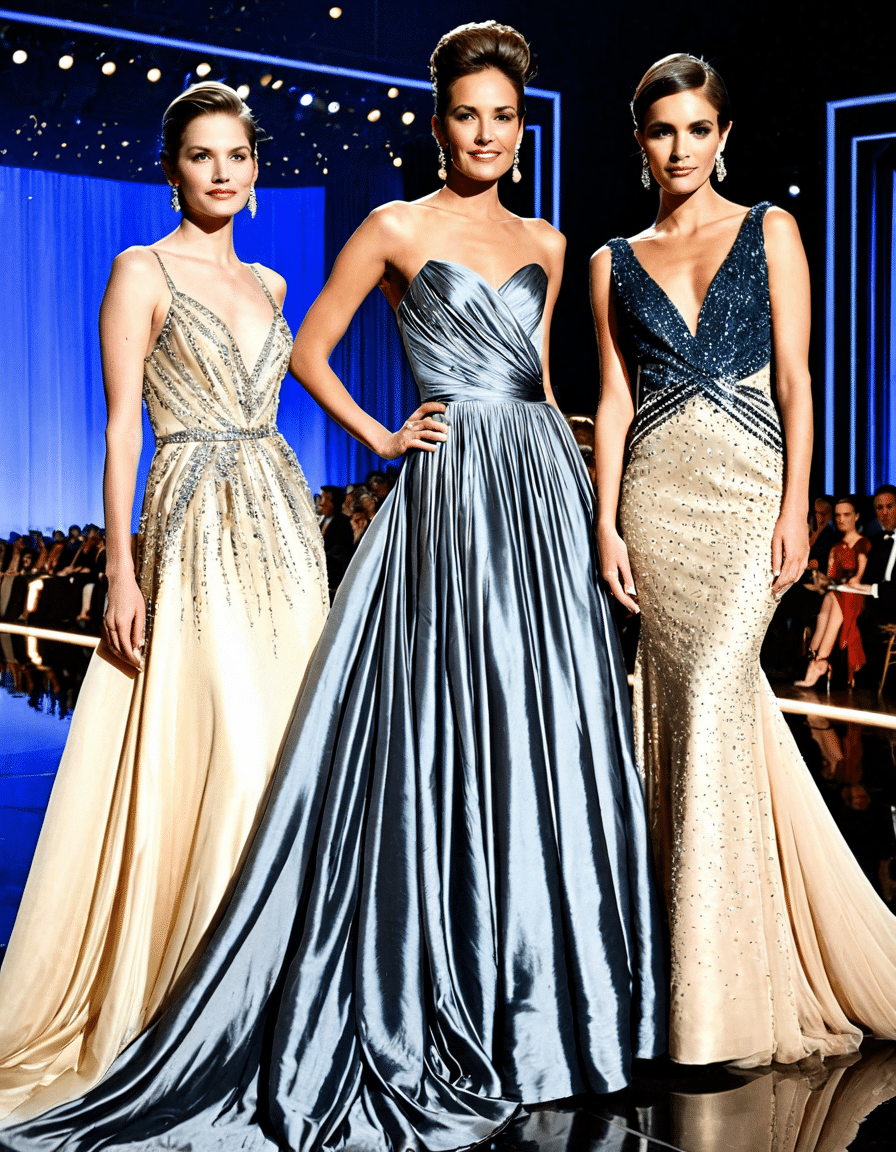
Worn On Tv Iconic Styles That Defined Generations
Throughout television history, certain styles have transcended the screen, influencing fashion trends and cultural movements. This exploration dives into the “worn on TV” phenomena, examining how iconic outfits have not only defined characters but also left a lasting impact on viewers’ wardrobes. These styles remind us of our favorite shows while effectively capturing the zeitgeist of their respective eras.

7 Iconic Styles Worn on TV That Shaped Cultural Trends
1. The Rachel from “Friends” – Jennifer Aniston
Ah, “The Rachel.” This hairstyle is arguably one of the most iconic cuts of the ’90s, characterized by its layered, voluminous look. Jennifer Aniston wore this style as Rachel Green throughout the show’s run, instantly making it a must-have for women across America. The influence was profound; salons everywhere reported skyrocketing requests for “The Rachel,” which became a symbolic representation of the decade’s style evolution.
But it wasn’t just the hair; it represented the aspirations of a generation. Women felt empowered to embrace their individuality, seeking out looks that reflected newfound confidence. Fast forward to today, and “The Rachel” still serves as a nostalgic recall of ’90s fashion resplendence. It showcases how a character’s look can spark real-world revolutions, creating lasting changes in hairstyling trends.
2. Cosby’s Sweaters – Bill Cosby in “The Cosby Show”
Bill Cosby’s vibrant and oversized sweaters became synonymous with his character, Cliff Huxtable. Bold colors and eclectic patterns dominated his wardrobe, challenging gender norms in fashion. The lively designs reflected Cliff’s playful personality, creating a comfortable yet eye-catching signature look.
What’s fascinating is how this style marked a shift in men’s fashion. Gone were the days of stuffy suits; instead, the focus shifted toward comfort and personality. Brands like GUESS and Stüssy have embraced this retro vibe, reintroducing similar designs as they tap into ‘80s and ‘90s nostalgia. Cosby’s style did more than entertain; it left behind a legacy that reshaped the norms of male fashion.
3. Claire Danes’ Minimalism in “My So-Called Life”
Claire Danes’ portrayal of Angela Chase in “My So-Called Life” pioneered a minimalist fashion style that rang true to ’90s youth culture. Angela’s wardrobe consisted of flannels, chokers, and simple tees, which resonated with a generation seeking authenticity and self-expression. It wasn’t just about the clothes; it was about feeling real in a world filled with noise.
Angela’s look inspired contemporary brands like Everlane and Allbirds, which emphasize sustainable fashion with simple yet impactful designs. The appeal of her loosely styled outfits wasn’t just about trends; it’s a deeper reflection of identity. As fashion becomes more conscious, Angela Chase’s influence resurfaces through the ethos of modern simplicity.
4. Phoebe Buffay’s Quirky Looks on “Friends” – Lisa Kudrow
Ah, Phoebe Buffay—she wasn’t just a character; she was a fashion phenomenon. Her eclectic wardrobe, filled with mismatched patterns and flowing maxi dresses, epitomized her unique personality. Phoebe encouraged viewers to embrace their individuality, proving that true style knows no bounds.
Her ensembles inspired a wave of modern bohemian trends that many brands now capitalize on. Free People and Anthropologie, for instance, showcase clothing that channels the same free-spirited vibe Phoebe portrayed. The fashion’s message is clear: celebrate who you are, and don’t be afraid to stand out. This quirky style still inspires a generation that values creativity and self-acceptance.
5. J.R. Ewing’s Power Suits in “Dallas” – Larry Hagman
With his portrayal of J.R. Ewing, Larry Hagman set the stage for a whole new archetype in men’s fashion. His tailored suits became synonymous with power, success, and authority. The sharp cuts, bold colors, and luxurious fabrics redefined how men dressed for success on screen and off.
The impact of J.R.’s wardrobe is seen in today’s fashion too. Designers like Ralph Lauren and Armani continue to echo this classic aesthetic, reinforcing the notion that a well-fitted suit conveys confidence. J.R. Ewing didn’t just wear suits; he created an image that resonates with anyone navigating the corporate world. Power dressing remains a timeless fashion statement for the ambitious.
6. Buffy Summers’ Leather Jackets and Combat Boots in “Buffy the Vampire Slayer” – Sarah Michelle Gellar
Buffy Summers emerged as an iconic feminist figure in the late ’90s, with her leather jackets and combat boots serving as a visual representation of her strength and resilience. The edgy aesthetic didn’t just resonate with viewers; it carved a niche in alternative fashion, empowering women and inspiring confidence.
Brands like AllSaints and Dr. Martens continue to draw influence from Buffy’s rebellious style. Her wardrobe choices encouraged a generation to embrace their inner warriors—stylishly, of course. Buffy showcased that strong female representation doesn’t just live in the narrative; it spills over into fashion, giving viewers an empowering visual reference.
7. The Uniforms of “The Office” – Various Cast Members
“The Office” takes a humorous yet relatable view of corporate attire, bringing the beige and black of office work into the limelight. With characters like Michael Scott flaunting ill-fitted suits and Pam sporting simple cardigans, the show humanized the everyday fashion worn on TV.
This portrayal altered the office fashion landscape, paving the way for a relaxed yet stylish office wardrobe. Companies like Uniqlo and Banana Republic now offer collections inspired by that casual professionalism, proving that workwear can be both functional and fashionable. As these styles continue to evolve, they remind us that personality can shine even in the most mundane settings.

The Enduring Legacy of Styles Worn on TV
The notion of “worn on TV” isn’t just a focal point for costume design; it reflects broader cultural narratives that leave an indelible mark on our fashion choices. From the hairstyles and clothing that characters donned to how these representations resonated with audiences, these styles have defined and shaped fashion trends across generations.
By engaging with both new and nostalgic programming, we see how clothes on screen inspire real-world fashion statements. Styles that have transcended their original contexts have the power not only to influence but to connect people with their favorite characters. The styles worn on TV won’t be forgotten; they will continue to inform and inspire as we step into the future of fashion.
Isn’t it remarkable how the simplicity or complexity of a character’s wardrobe can inspire and shape our collective consciousness? As we put on our favorite sweaters or comb our hair like our beloved characters, we become part of this ongoing story—a story woven with fabric, color, and history, linking us to the magic of television itself.
Worn on TV: Iconic Styles That Defined Generations
The Power of Fashion on Screen
When we think of iconic outfits worn on TV, some characters ignite a wave of nostalgia that defines entire generations. For instance, who could forget the trendy looks of the ’90s sitcoms that made countless viewers flock to shopping malls? Such styles have become so ingrained in pop culture that they often inspire cliche phrases in everyday conversation, creating a language all their own. Fashion statements like Rachel Green’s plaid skirt or the oversized shirts from “Full House” not only impacted fashion trends but also reflected the social zeitgeist of their times. It’s as if those who were learning to navigate adulthood during these shows ended up adopting their favorite characters’ styles, establishing a shared cultural identity.
Behind the Scenes: A Designer’s Dream
Interestingly, the magic behind these iconic looks often involves skilled costume designers who blend creativity with a deep understanding of storytelling. For example, the character Sabrina Spellman from “Sabrina the Teenage Witch” sported outfits that balanced whimsy and trendiness, appealing to both teens and adults alike. This next level of character development helped cement fashion as a crucial element—an idea that resonates even in discussions about contemporary shows, where fashion choices can hint at underlying themes. Some viewers even passionately debate terminology like Dilf meaning in casual conversations while chatting about their favorite series, showcasing the intertwining of style and narrative in modern folklore.
Style Evolution: From Classic to Modern
It’s fascinating to see how style evolves, giving rise to different trends over decades. For instance, “The Wizard of Oz” influenced not just film, but also a variety of adaptations in fashion—showing that what you wear can have a powerful legacy. Today, platforms like Instagram and TikTok showcase what it means to express personal style clearly, but the roots of this phenomenon can be traced back to those iconic television ensembles. Just think of shows that have inspired the current youth trends, like “Sex and the City” or “Friends.” Who could resist diving into a Longlegs review to explore how the characters inspire current fashion?
In conclusion, as we reflect on the styles worn on TV over the years, it’s evident that these looks transcend clothing—they weave themselves into the fabric of our collective memory. Every outfit tells a story, contributing to the rich tapestry of entertainment history. So, next time you catch a rerun, pay attention to what’s on screen; you might just uncover a forgotten gem that sparked a trend or even laid the groundwork for modern fashion conversations.










